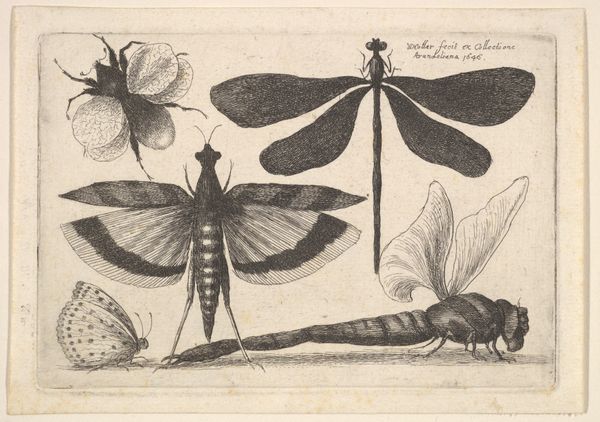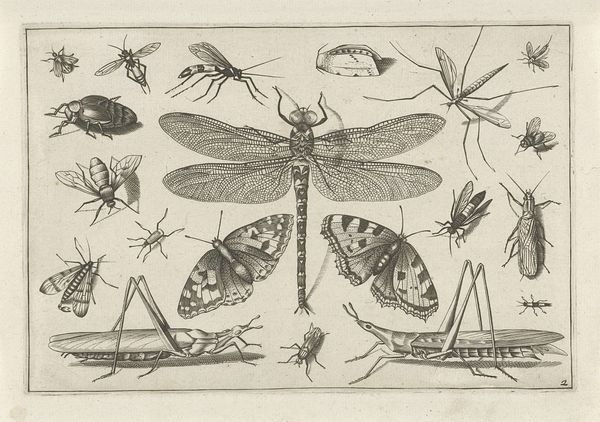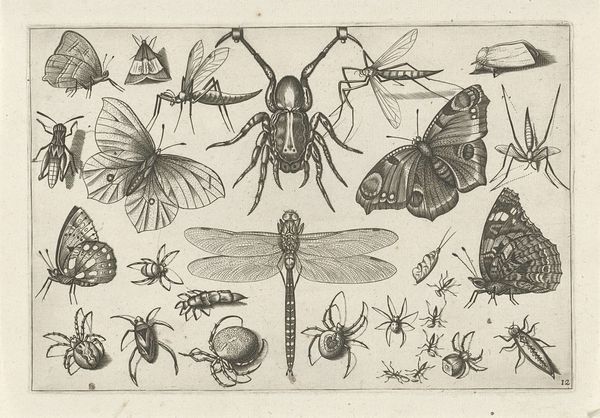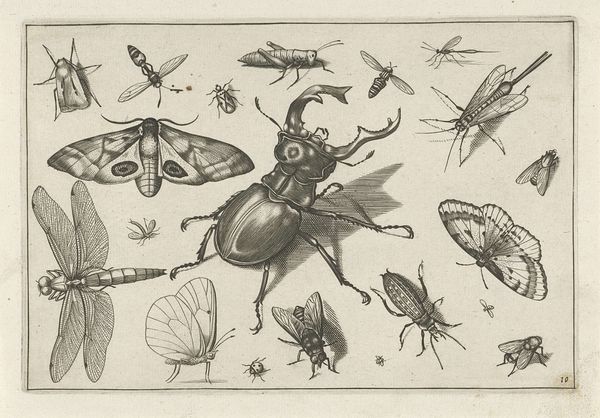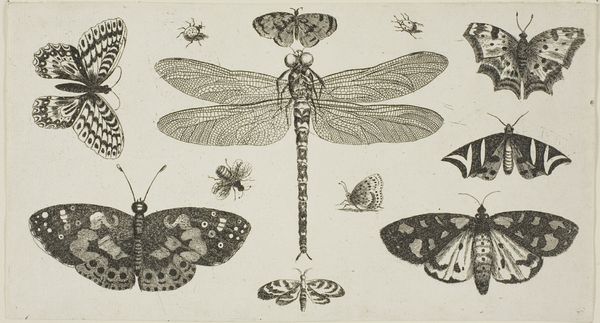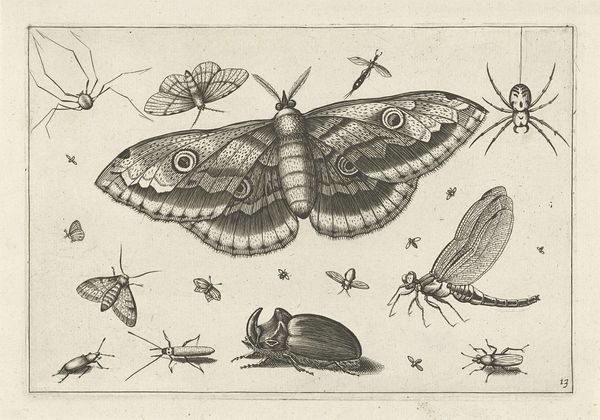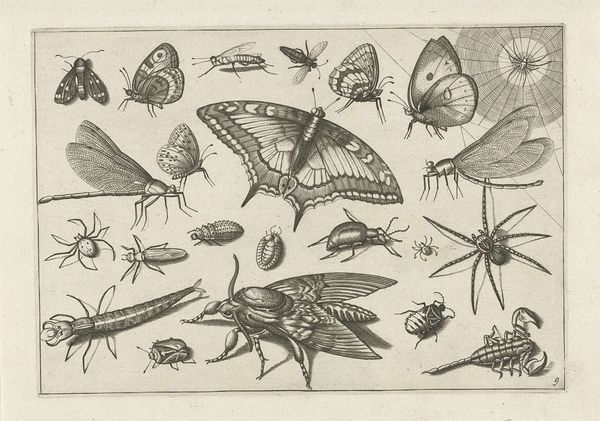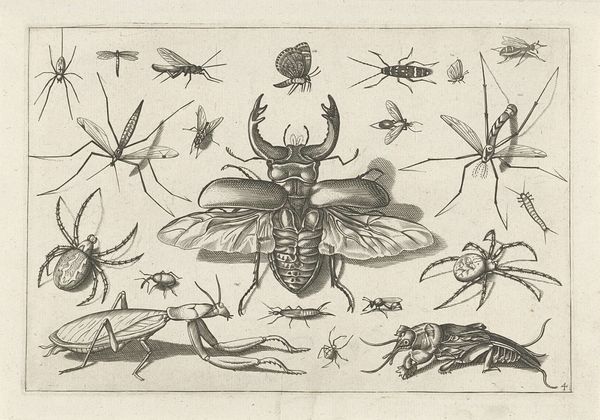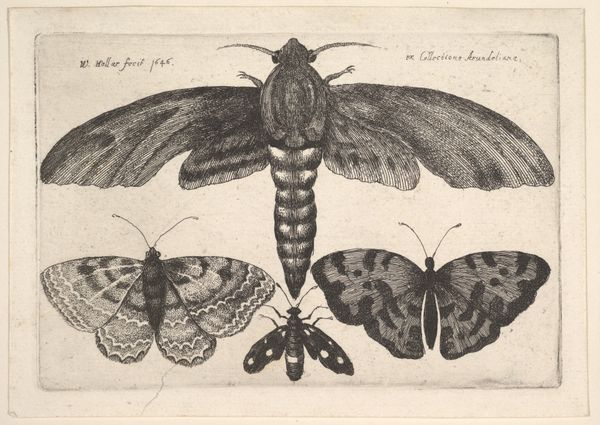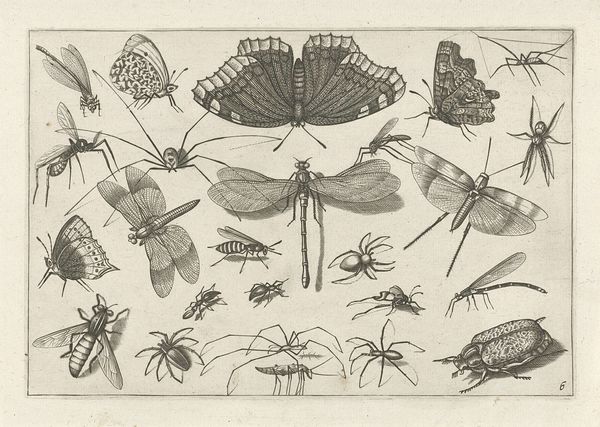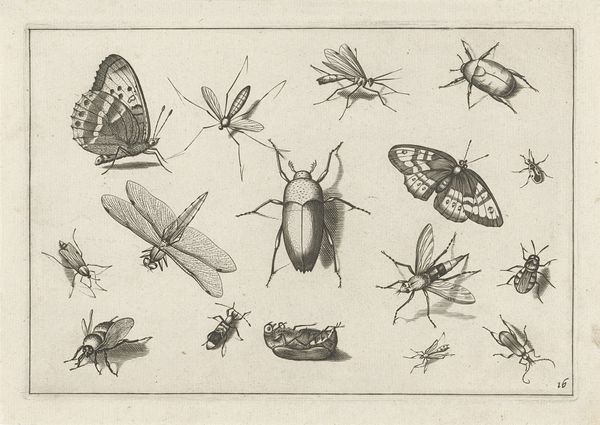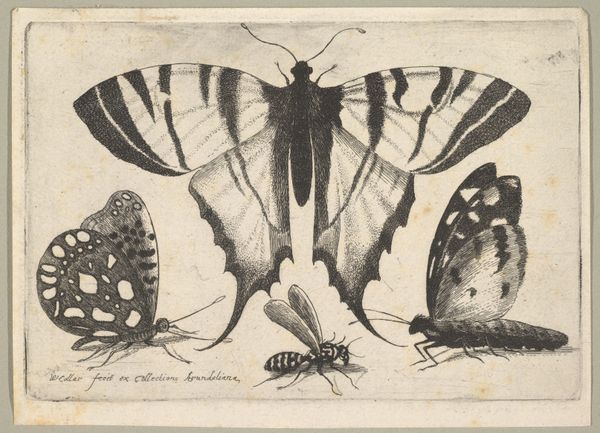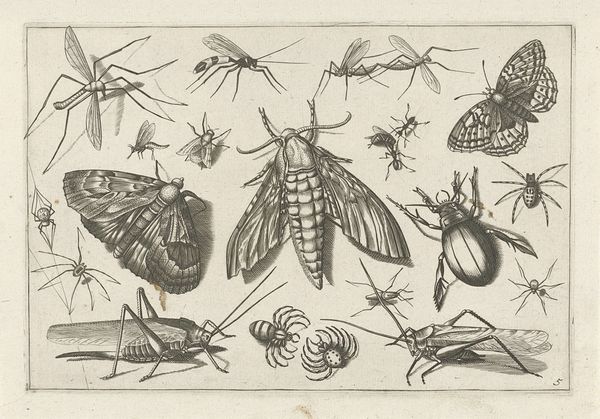
drawing, print, etching, engraving
#
drawing
#
baroque
# print
#
etching
#
engraving
Dimensions: Plate: 3 3/16 × 4 5/8 in. (8.1 × 11.8 cm) Sheet: 7 1/2 × 5 1/16 in. (19.1 × 12.9 cm)
Copyright: Public Domain
Editor: So, this etching is called "Six Insects," made by Wenceslaus Hollar in 1646. The detail is just incredible, almost scientific. What’s striking to me is how it elevates these creatures; it's not just a record, it feels like a statement. How do you interpret this work? Curator: Absolutely. Beyond its apparent scientific accuracy, it’s important to consider the cultural context of 17th-century Europe. The rise of natural philosophy was challenging existing power structures. Consider that Hollar meticulously documented these insects, things often overlooked or considered pests. Doesn't that act as a metaphor? The close study of these 'lesser' beings subverts the hierarchical worldview of the time. The print challenges established views on what’s considered important, wouldn't you agree? Editor: That's a powerful way to look at it! So, it's not just about the insects themselves, but about questioning the social order. Did Hollar face any resistance for challenging these views? Curator: While direct evidence of persecution is scant, remember that intellectual circles were often scrutinized. The mere act of turning his attention to these creatures could be seen as a quiet act of rebellion. Think about the legacy: by immortalizing them in art, he elevated their status. He questioned conventional social structures and knowledge. Editor: I never would have considered the political undertones of insect art. Thanks for broadening my perspective! Curator: It's through these kinds of intersectional readings that we uncover art's profound resonance and relevance to us, today.
Comments
No comments
Be the first to comment and join the conversation on the ultimate creative platform.
